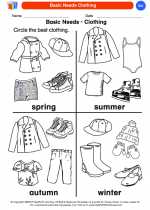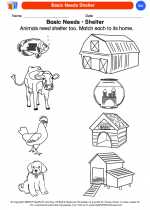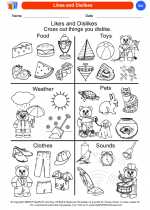Stormy Weather: A Kindergarten Science Study Guide
What is a Storm?
A storm is a disturbance in the atmosphere that can bring strong winds, heavy rain, lightning, thunder, and sometimes even snow or ice. Storms can be dangerous, but they are also an important part of the Earth's weather patterns.
Types of Storms
There are different types of storms, including thunderstorms, hurricanes, tornadoes, blizzards, and more. Each type of storm has its own unique characteristics and can occur in different parts of the world.
How Do Storms Form?
Storms often form when warm, moist air rises and meets cooler air. This can create instability in the atmosphere, leading to the formation of clouds, thunder, and lightning. In the case of hurricanes, they form over warm ocean waters and can grow in strength as they move across the water.
Staying Safe During a Storm
It's important to know how to stay safe during a storm. This includes finding shelter indoors, away from windows and doors, and avoiding any potential hazards such as fallen power lines or flooding. It's also important to listen to weather forecasts and follow any evacuation orders if necessary.
How Can We Help?
Scientists and meteorologists study storms to better understand how they form and how to predict them. This knowledge can help communities better prepare for and respond to storms, keeping people safe and minimizing damage to property.
Fun Activities
1. Create a weather chart to track different types of weather, including storms. 2. Make a tornado in a bottle using water and dish soap. 3. Draw or paint a picture of a storm and talk about the different features you included.
Now that you have learned about storms, you can appreciate the power of nature and understand how to stay safe during stormy weather. Happy learning!
[Stormy] Related Worksheets and Study Guides:
.◂Science Worksheets and Study Guides Kindergarten. Me and My Family

 Coloring Worksheet
Coloring Worksheet
 Coloring Worksheet
Coloring Worksheet
 Coloring Worksheet
Coloring Worksheet
 Coloring Worksheet
Coloring Worksheet
 Coloring Worksheet
Coloring Worksheet
 Coloring Worksheet
Coloring Worksheet
 Coloring Worksheet
Coloring Worksheet
 Coloring Worksheet
Coloring Worksheet
 Coloring Worksheet
Coloring Worksheet
 Coloring Worksheet
Coloring Worksheet
 Coloring Worksheet
Coloring Worksheet
 Coloring Worksheet
Coloring Worksheet
 Coloring Worksheet
Coloring Worksheet
 Coloring Worksheet
Coloring Worksheet
 Coloring Worksheet
Coloring Worksheet
 Coloring Worksheet
Coloring Worksheet
 Coloring Worksheet
Coloring Worksheet
 Coloring Worksheet
Coloring Worksheet
 Coloring Worksheet
Coloring Worksheet
